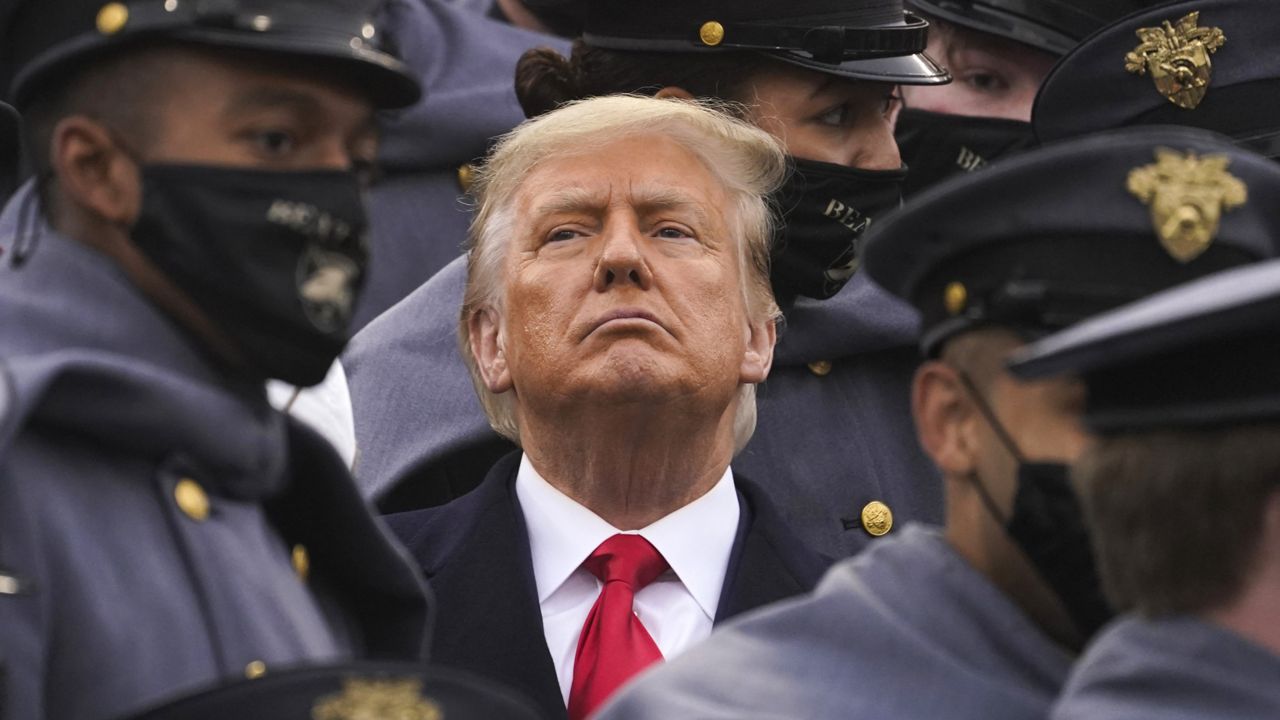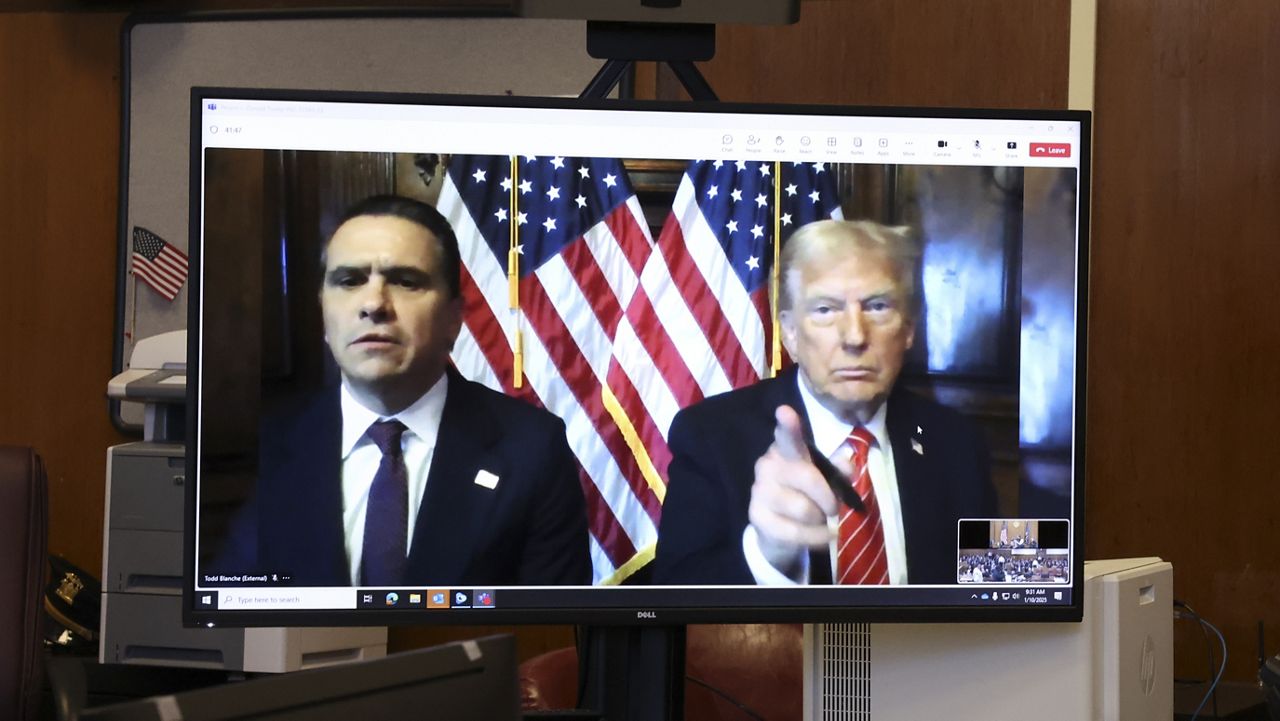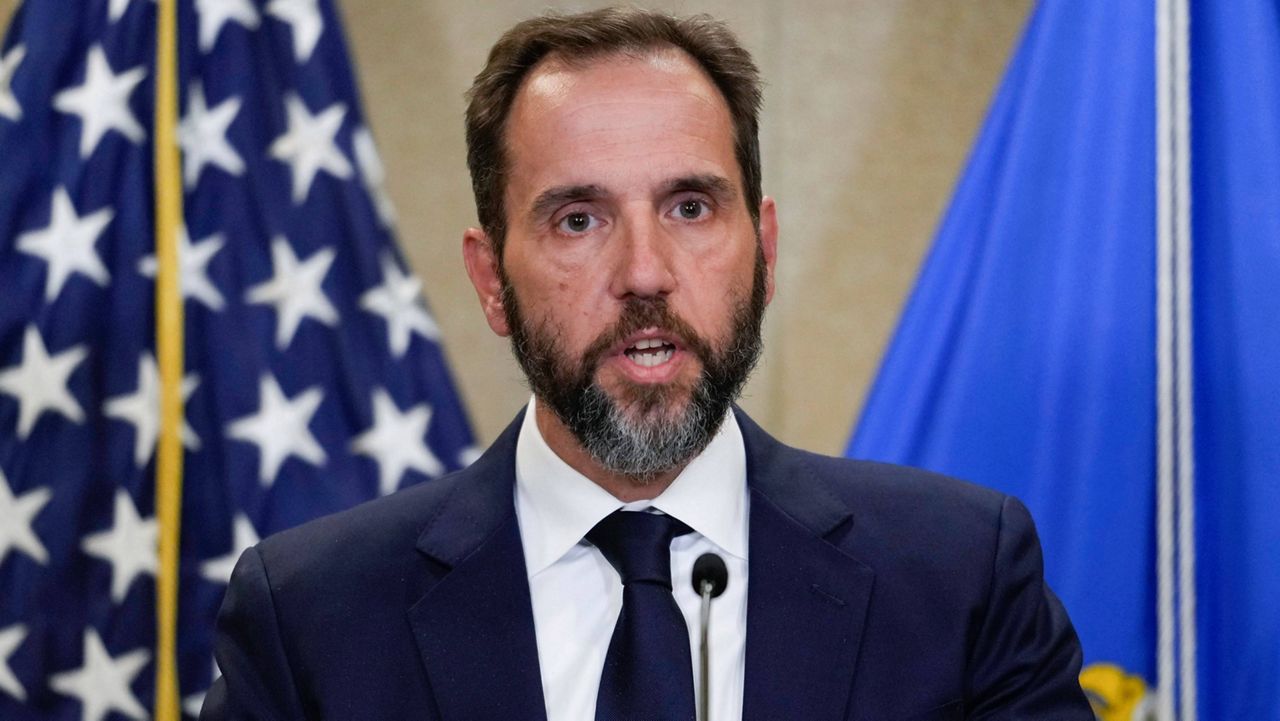Words matter. But numbers tell stories, too.
Presidential historians and others will plumb them as they assess President Donald Trump’s legacy.
Trump’s presidency is reflected in a broad range of numbers representing everything from the U.S. death toll during the coronavirus pandemic to the miles of his “big, beautiful wall” along the border with Mexico to the tens of thousands of tweets he sent during four years in office.
0: Comprehensive health care overhaul plans Trump introduced despite repeated promises to replace the Obama-era Affordable Care Act with a plan that would cover everyone at a lower cost.
1: New branch of U.S. military: the Space Force.
2: Coronavirus vaccines — by Pfizer and BioNTech, and a separate one by Moderna — that U.S. regulators approved in 2020 for emergency use.
3: Justices added to the Supreme Court, establishing a solid 6-3 conservative majority.
3: In-person meetings with North Korean leader Kim Jong Un (in Singapore, Vietnam and the Korean demilitarized zone).
4: Men who served as acting secretary of defense, the most in any administration.
4: International agreements Trump pulled the U.S. out of: Iran nuclear deal, Paris climate agreement, Open Skies Treaty and Intermediate-Range Nuclear Forces Treaty.
6: Coronavirus vaccines being developed and-or distributed under Trump’s Operation Warp Speed program.
13: Federal executions scheduled since July, when the administration resumed putting inmates to death after a 17-year hiatus, making Trump the most prolific execution president in more than 130 years. Federal executions will be carried out until just before the Jan. 20 inauguration of President-elect Joe Biden.
15%: Drop in trade deficit with China between January-September 2020 and a year earlier. This followed a 19% drop in 2019 to $308 billion, the lowest since 2013.
39%: Trump’s average approval rating among American adults in AP-NORC polls over the course of his presidency. Assessments of Trump’s performance were remarkably stable, compared with his recent predecessors, ranging from a low of 32% to a high of 43% in AP-NORC polls.
82: Number of Trump administration environmental and public health rollbacks tracked on Harvard University’s rollback tracker.
203: Days the Pentagon operated without a Senate-confirmed defense secretary, the longest stretch in the history of the office.
221: Federal trial-level and appeals court judges added to the judiciary.
315: Days Trump has visited a golf course as president, according to Factba.se, a data analytics company.
418: Days Trump has visited a property he owns, according to Factba.se.
450: Miles of Trump’s “big, beautiful” steel wall along the U.S.-Mexico border expected to completed by year’s end.
25,000 and counting: Tweets, including original messages and retweets, sent by Trump since he took office on Jan. 20, 2017, according to Factba.se.
322,000 and counting: Number of U.S. deaths attributed to COVID-19.
1 billion: Barrels of oil and gas pumped from federally managed lands in 2019 as the administration sped permits and opened wilderness and other areas to the industry.
$135 billion: Expected growth in the defense budget under Trump. President Barack Obama’s final defense budget for 2017 totaled $605 billion; Trump’s final defense budget for 2021, approved by Congress in December, totaled $740 billion. Trump said he planned to veto the bill for unrelated reasons, but Congress had enough votes to override a veto and enact the bill over his objections.
$3.1 trillion: 2020 budget deficit, the largest in dollar terms in U.S. history. Trump had pledged during the 2016 campaign to eliminate the gap between federal spending and revenue. Tax cuts Trump enacted in 2017 contributed to the imbalance, and it ballooned further after Congress passed $2.4 trillion in economic relief earlier this year to help unemployed workers, business owners and others weather the financial fallout from the coronavirus pandemic.
$21 trillion: Federal debt in December, when it exceeded the size of the economy for the first time in history outside World War II.
The Associated Press contributed to this report.







